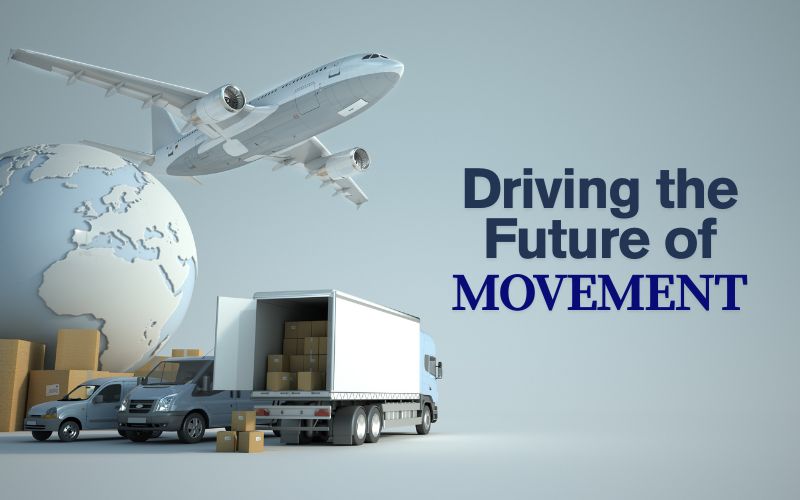“Technology isn’t just helping logistics evolve—it’s reshaping it entirely. For companies that are willing to invest in innovation, the rewards are massive: faster deliveries, smarter systems, lower costs, and happier customers.” Sunil Kumar, CEO, Everfast Freight Forwarders Pvt. Ltd
Logistics might not always get the spotlight, but it plays a vital role in our everyday lives. From getting your latest online order to delivering life-saving vaccines across borders, the industry quietly keeps the world moving. But with global supply chains becoming more complex and customer expectations rising fast, the old ways of doing things just don’t cut it anymore. And that’s where technology steps in.
Today, logistics is about much more than just trucks, ships, and warehouses. It’s about smart systems, real-time data, and connected networks. From AI and automation to IoT and blockchain, technology is changing how the industry thinks, plans, and operates.
Automation: Taking Efficiency to the Next Level
Walk into a modern warehouse and you might feel like you’ve entered a sci-fi movie. Robots are picking and packing products, conveyor belts are zipping around with precise timing, and automated vehicles are moving pallets without missing a beat.
Automation, especially in warehousing and back-office operations, is cutting down on manual tasks, reducing errors, and speeding things up. Even on the administrative side, technologies like robotic process automation (RPA) are helping companies handle repetitive tasks like data entry and invoice processing—freeing up teams to focus on more strategic work.
AI and Machine Learning: Smarter Every Step of the Way
Artificial intelligence (AI) and machine learning (ML) are turning logistics into a data-driven powerhouse. These technologies help companies predict demand, spot potential delays, and optimize inventory—often before issues even arise.
For instance, AI-powered route optimization tools can factor in traffic, weather, fuel costs, and delivery windows to find the fastest, most cost-effective path. On the maintenance side, predictive systems can flag when a truck or piece of equipment might fail—saving money and avoiding costly downtime.
Even customer service is getting an upgrade, with smart chatbots handling common questions and tracking updates around the clock.
“One of the most powerful innovations in logistics has been the Internet of Things (IoT). Think of it as adding a digital layer of awareness to physical shipments. With IoT sensors, companies can track exactly where their goods are—and what condition they are in—in real time.”
IoT: Eyes on Every Shipment
One of the most powerful innovations in logistics has been the Internet of Things (IoT). Think of it as adding a digital layer of awareness to physical shipments. With IoT sensors, companies can track exactly where their goods are—and what condition they are in—in real time.
This is especially crucial for sensitive products like pharmaceuticals or fresh food, where even a small temperature change can ruin an entire shipment. With real-time alerts, logistics teams can act fast and avoid major losses. For businesses and customers alike, this level of transparency builds trust and provides peace of mind.

Blockchain: Trust Without the Middlemen
When multiple players are involved in a supply chain, keeping records straight can be a challenge. Enter blockchain—a technology that creates secure, tamper-proof records of every transaction.
Whether it’s tracing the origin of raw materials or speeding up customs approvals with smart contracts, blockchain helps cut red tape and reduce fraud. It’s not just about keeping data safe—it’s about making logistics more transparent, trustworthy, and efficient.
Data Analytics: The Secret Weapon
Each and every scan, shipment, and delivery generates data. But without the right tools, it’s just noise. That’s why advanced analytics has become a secret weapon in the logistics world.
With real-time dashboards and deep insights, companies can track performance, fine-tune fuel usage, predict surges in demand, and make smarter decisions across the board. When data is used the right way, logistics becomes not just a cost to manage—but a competitive advantage.
“Sure, there are still regulatory and infrastructure hurdles to clear. But the direction is clear: the industry is going digital, becoming more intelligent, and putting the customer at the centre of every decision.”
The Road Ahead: Autonomous and Connected
Looking forward, the logistics industry is heading into exciting territory. Self-driving delivery vehicles, drone drops, and fully automated fulfilment centers are no longer ideas from the future—they are already being tested.
Sure, there are still regulatory and infrastructure hurdles to clear. But the direction is clear: the industry is going digital, becoming more intelligent, and putting the customer at the centre of every decision.
Final Thoughts
Technology isn’t just helping logistics evolve—it’s reshaping it entirely. For companies that are willing to invest in innovation, the rewards are massive: faster deliveries, smarter systems, lower costs, and happier customers.
In a business where timing, accuracy, and visibility can make or break success, embracing technology isn’t optional anymore. It’s the key to staying ahead.
The author is Sunil Kumar, CEO, Everfast Freight Forwarders Pvt. Ltd.

